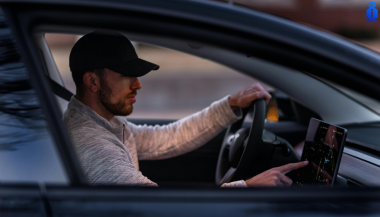A Journey Through Time
Imagine holding a car key from 1920 and trying to start a modern electric vehicle. The mere concept of what a “car key” represents has undergone a profound transformation, reflecting changes in automotive technology, security, and convenience. From simple mechanical tools to sophisticated digital devices, car keys have evolved alongside the vehicles they unlock. But how did we get here, and what does the future hold for this essential accessory?
The Humble Beginnings: Mechanical Keys
The car key’s story begins in the early 20th century, a time when cars were a luxury rather than a necessity. Early automobiles didn’t require keys as we know them today. Drivers used manual cranks to start the engine, a labor-intensive and often hazardous process.
By the 1920s, the first generation of mechanical car keys emerged. These keys were simple, utilitarian devices used to lock the vehicle’s ignition or steering mechanisms. They marked the beginning of an era where security and convenience started to merge.
Key features of early car keys included:
- A straightforward design, often a single-sided cut metal key.
- Limited security, as locks were rudimentary and easily picked.
Despite their simplicity, these keys represented a revolutionary leap in vehicle security and usability.
Entering the Electric Era: Ignition and Beyond
The 1940s and 1950s saw a significant evolution in car keys with the introduction of ignition locks. These new systems required a key to start the vehicle, making cars both safer and easier to use. Manufacturers like Chrysler pioneered these innovations, creating a standard that would dominate for decades.
The electric ignition systems introduced:
- A dual-purpose functionality: keys could unlock doors and start engines.
- Enhanced security, discouraging theft by eliminating manual starts.
However, as automotive theft techniques became more sophisticated, so did the need for better security measures.
The Advent of Remote Keyless Entry
The 1980s and 1990s marked a pivotal period in the evolution of car keys with the introduction of remote keyless entry (RKE) systems. These keys included a built-in transmitter, allowing drivers to lock and unlock their cars with the push of a button. This innovation redefined convenience and set the stage for a digital future.
Key highlights of RKE systems:
- Enhanced security with encrypted signals to prevent unauthorized access.
- Added features such as panic buttons and trunk releases.
For many, the ability to control their car remotely became synonymous with modern luxury and convenience.
Smart Keys and Digital Transformation
As the 21st century arrived, car keys underwent another transformation, becoming “smart.” These keys, often shaped more like fobs than traditional keys, allowed for keyless ignition and entry. Equipped with proximity sensors, smart keys automatically unlock doors and start engines when the fob is nearby.
Features of smart keys include:
- Passive entry and start systems, eliminating the need to physically insert a key.
- Advanced encryption technologies to combat modern car theft tactics.
Automotive giants such as Mercedes-Benz and BMW led the charge in incorporating smart keys into their vehicles, reflecting a growing trend toward connectivity and automation.
Biometric and Smartphone Integration: A Glimpse into the Future
Today, the car key is on the brink of another revolution. Biometric systems and smartphone integration are becoming increasingly common, offering even greater security and convenience.
Emerging trends include:
- Fingerprint and facial recognition systems: Some luxury vehicles now allow drivers to unlock and start their cars using biometric data.
- Digital keys: Smartphone apps are replacing physical keys entirely, enabling drivers to control their vehicles remotely.
These innovations are part of a broader shift toward connected mobility. With digital ecosystems becoming central to the automotive experience, car keys are evolving into multifunctional tools that integrate seamlessly with a driver’s digital life.
Global Perspectives: Trends Across Markets
The evolution of car keys has not been uniform across the globe. In developed markets such as North America, Europe, and Japan, digital and smart keys dominate, reflecting advanced technological adoption. In contrast, mechanical keys remain prevalent in emerging economies, where affordability and simplicity often take precedence over cutting-edge innovation.
Automotive manufacturers are responding to these differences by tailoring their offerings. For instance:
- In premium markets, luxury carmakers emphasize smart and biometric key systems as standard.
- In cost-sensitive regions, manufacturers offer basic mechanical or remote keys as a practical solution.
These distinctions highlight the diverse ways in which the car key continues to evolve, shaped by cultural, economic, and technological factors.
The Challenges Ahead: Balancing Innovation and Security
While modern car keys offer unparalleled convenience, they also come with challenges. Cybersecurity threats, such as hacking and relay attacks, pose significant risks to digital and smart key systems. Industry experts emphasize the need for robust encryption and regular software updates to mitigate these risks.
Moreover, the shift toward digital keys raises concerns about dependency on smartphones. What happens if a phone runs out of battery or malfunctions? Manufacturers are exploring hybrid solutions that combine digital and physical access to address such scenarios.
Unlocking the Future
The evolution of the car key mirrors the broader changes in automotive technology, from mechanical simplicity to digital sophistication. As we move toward an era of autonomous and connected vehicles, the humble car key is poised to become an even more integral part of our mobility experience.
For now, car keys remain a fascinating blend of past, present, and future. Whether it’s a vintage metal key or a cutting-edge biometric system, they continue to unlock not just our vehicles but also the stories of innovation and progress.
The next time you hold your car key—be it physical, smart, or digital—pause for a moment to appreciate the journey it represents. Who knows? In a few decades, we might be reminiscing about keys altogether as we step into fully autonomous, keyless vehicles.

 (1)_1736339207.jpeg)
 (1)_1736343157.jpg)


